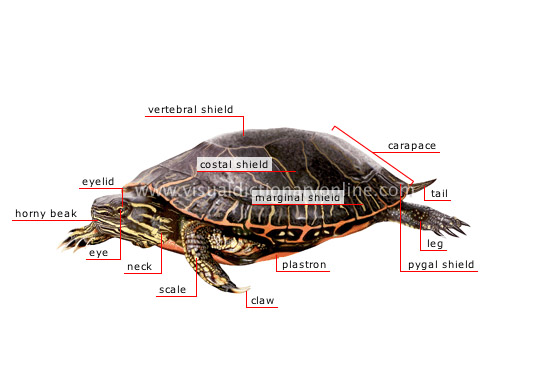morphology of a turtle
plastron 
Relatively flat bony casing protecting the belly and cut away on the sides to allow the legs to move.
carapace 
Bony casing in the shape of a rounded hump; it protects the back and connects to the plastron.
leg 
Short thick articulated limb bearing claws and used for walking or swimming, depending on the species.
claw 
Slightly curved, rigid pointy structure; the forelegs have five while the hind legs have four.
scale 
Each of the small hard thin overlapping plates covering the body of the turtle.
horny beak 
Thick cutaneous formation covering toothless jaws; its sharp edges allow the turtle to feed.
eye 
Organ of sight located on the head and having poor vision; it can make out motion and colors.
eyelid 
Each of the three movable muscular membranes protecting the anterior surface of the eye.
neck 
Long flexible portion of the body covered in small scales; the turtle folds it back to retract its head into the carapace.
costal shield 
Large corneous scales set in a row on each side of the back shell.
vertebral shield 
Large corneous scales set in a row on the middle portion of the back shell.
marginal shield 
Small corneous scales set in a row around the back shell.
tail 
Small terminal appendage of the body that retracts into the carapace.
pygal shield 
Very small corneous scale located on the posterior portion of the back shell, above the tail.






